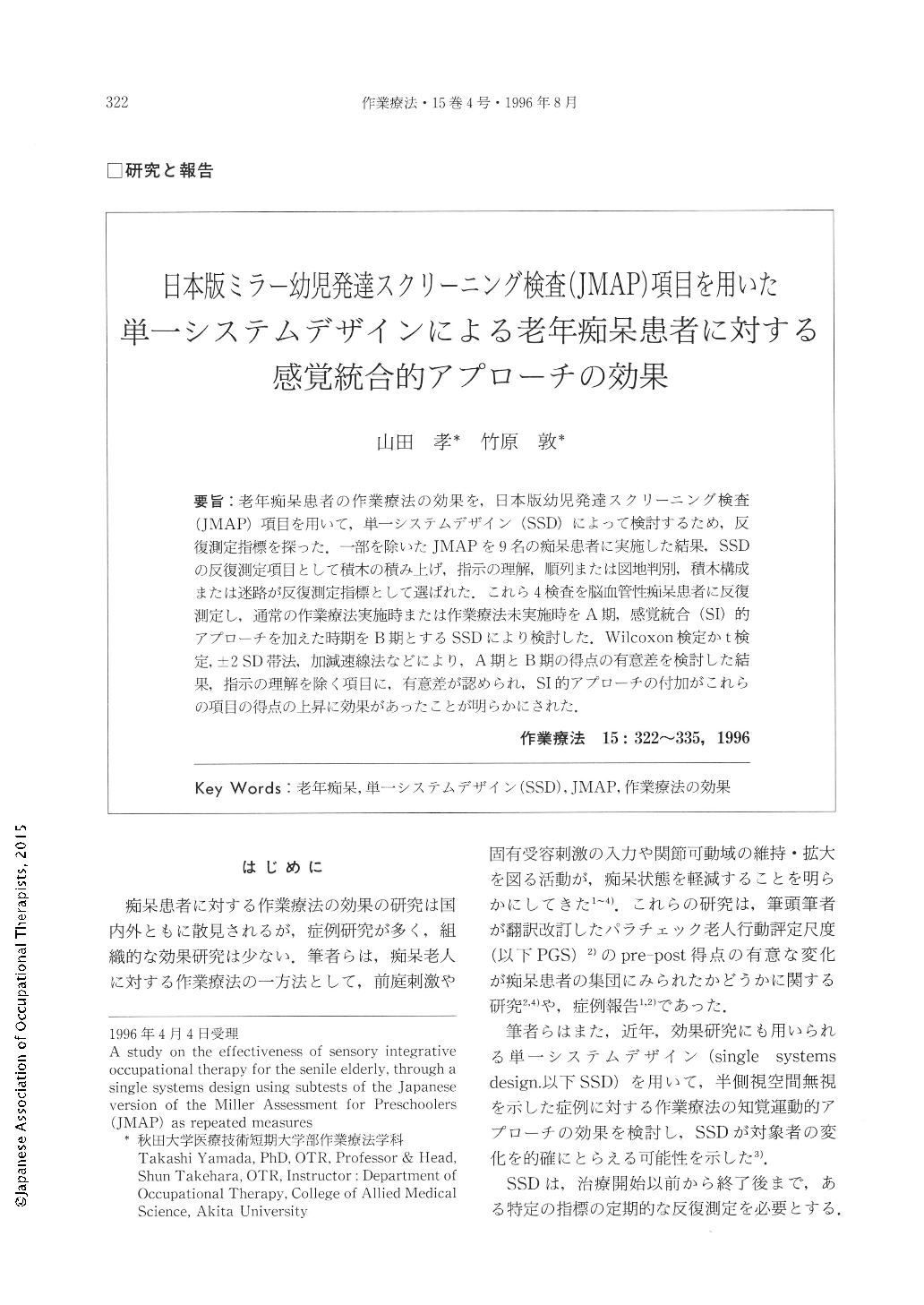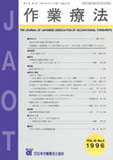Japanese
English
- 販売していません
- Abstract 文献概要
- 1ページ目 Look Inside
- 参考文献 Reference
- サイト内被引用 Cited by
要旨:老年痴呆患者の作業療法の効果を,日本版幼児発達スクリーニング検査(JMAP)項目を用いて,単一システムデザイン(SSD)によって検討するため,反復測定指標を探った.一部を除いたJMAPを9名の痴呆患者に実施した結果,SSDの反復測定項目として積木の積み上げ指示の理解,順列または図地判別,積木構成または迷路が反復測定指標として選ばれた.これら4検査を脳血管性痴呆患者に反復測定し,通常の作業療法実施時または作業療法未実施時をA期,感覚統合(SI)的アプローチを加えた時期をB期とするSSDにより検討した.Wilcoxon検定かt検定,±2SD帯法,加減速線法などにより,A期とB期の得点の有意差を検討した結果,指示の理解を除く項目に,有意差が認められ,SI的アプローチの付加がこれらの項目の得点の上昇に効果があったことが明らかにされた.
In order to study the effectiveness of occupational therapy (OT) intervention for the senile elderly using single systems design (SSD), it is necessary to establish a repeated measuring system which should be free from the effect of repeated measurements.
From the previous research projects, it was suggested that the activities of daily living skills of the elderly were decreased as states of dementia became more severe, the opposite being the developmental process of acquisition of these skills in normal children. We decided to use the subtests of the Japanese version of the Miller Assessment for Preschoolers (JMAP) that was originally developed by L. Miller in the United States, and translated and restandardized by the first author, et al. in Japan, as repeated measures for this study. Results of the preliminary study indicated that four subtests of JMAP-Tower, Following Direction. Figure-and-Ground or Sequencing, and Construction of the Cube or Maze were able to use as repeated measures.
Using these subtests as repeated measures, SSD was applied to the elderly to test the effectiveness of the intervention of occupational therapy. Originally, nine elderly persons participated in this study. However, due to patient discharges from hospitals and facilities before gathering complete data, we could gather data from only five persons. During phase A, patients were assigned no OT intervention or regular OT intervention and were primarily using arts and crafts activities. Then, sensory integrative (SI) therapy, as described by L. J. King, was added to the OT regimen. This phase was called as B.
The results of this study are shown in Table 3 and Fig. 1 through 8. From the results, adding SI therapy to regular OT prescription for these patients was effective in improving the scores of the repeated measures except for Following Direction.

Copyright © 1996, Japanese Association of Occupational Therapists. All rights reserved.


